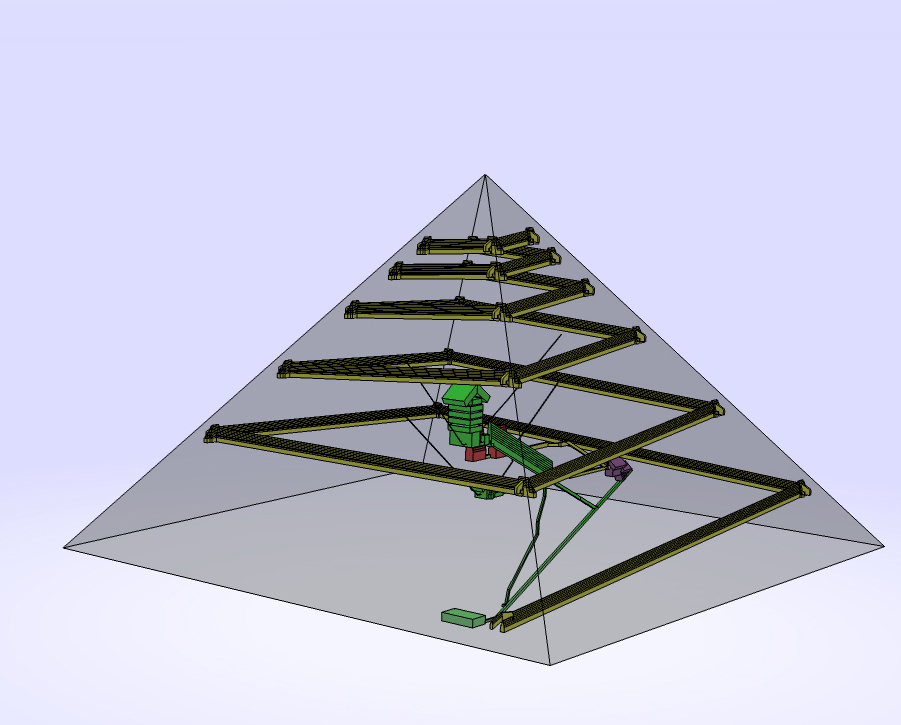- Joined
- Aug 10, 2013
- Messages
- 25,268
- Reaction score
- 12,670
no disagreement here.Oh it’s impressive but with modern tech, totally doable today.
no disagreement here.Oh it’s impressive but with modern tech, totally doable today.
Meet Big Carl. It could sit on one side of the pyramid and set blocks on the other side, can lift 5500 tons and is 800 feet high.
https://www.constructionjunkie.com/...-crane-set-to-begin-work-on-its-first-project
The only reason it wasn't built taller than The Great Pyramid was because the land was in the path of the airport runways.
The Science Channel had a series called, "If we built it today". The first episode was about building the Great Pyramid.
This is one of the recurring topics on this site. There are people who say it is so precisely built but it's impossible to measure because the casing stones are gone. Some people think it's built entirely of precisely cut stone but it's more likely that it's made of roughly cut irregular stone on the perimeter and filled in with stone rubble on the inside. With today's technology it could easily be built. The Great Pyramid weighs about 6 million pounds. That is the equivalent of about 261,000 fully loaded twenty foot long shipping containers. The Port of Shanghai handles 42 million containers a year or 115,000 per day so 261,000 containers would be about 2 days and 4 hours worth.
Today we have the capability of precisely cutting even hard stone like granite fairly quickly and we have machines that could set large stones at great heights.
This estimate said 1.2 billion in 2018.
https://www.bigrentz.com/blog/cost-build-ancient-structures
Other estimates go up to $5 billion.
I don't recall what the "If we built it today" estimate was.
They spent almost $2 billion to build a stadium for a mediocre Raider football team and $5 billion for the Rams and Chargers that nobody will go to.
lol. I don't know what else to say to this. You can't align a building on a 14 acre footprint to within 3/60ths of a degree to true north with sticks and shadows. That's not how that works.It is very easy to align the cardinal directions. Put a vertical post in the ground and mark it's shadow through the day from sunrise to sunset. The shortest shadow is at noon. An equal distance either side of that gives you East and West. Lay out a square with one side on the East-West line and the other sides are aligned. The people who think the pyramid is so accurate are grasping at straws because there is nothing left to measure to get any precision measurements.
They had slaves. Time to knock down the pyramids.Casting doubt on African achievements. Racist.
Architect Jean-Pierre Houdin has a cool theory, and he spent half a lifetime coming up with it. I don't know if he came up with the internal ramp theory, but he certainly has gone to great lengths to lay it out.

As mysterious as the construction is, how they cut the granite blocks, and carved/aligned them so perfectly astounds me just as much, at least at the Giza complex. What's equally astounding, is the plateau, and the basalt flooring. Don't forget, there are channels far underground too.
Either the dynastic Egyptians were far more advanced than we know, or someone else built them. The engineering is elite.
Look at the Serapeum of Saqqara . How they carved, and moved those "boxes", is incredible, even highly difficult by today's standards

Nope. Not enough jews to build it. They had the goat manual labor ethic.

It’s got to be at least bigger than the Mexican/Guatemalan wall.trump should build the biggest pyramid and the greatest wall

that fence looks weakIt’s got to be at least bigger than the Mexican/Guatemalan wall.
And people act like we don’t have a wall already, it’s just not 100% all the way across the border.
it’s actually more like “finish” the wall than “build” the wall.


Do we have the tools/technology/innovation/determination to build these pyramids?

Both the Blue and White nile originate outside Egypt, but Egypt acts like the river belongs to it only. The Blue Nike originates in Ethiopia and contributes most the water to Egypt.That's funny, because doesn't the Nile water flow from outside egypt into egypt?
My brother was the head biologist at that place.Even better

Just amazingly how accurate and precise it was considering it's size. Do we have the tools/technology/innovation/determination to build these pyramids?
There are parts that look more like the Texas wall above it, and some parts pretty dang substantial, but not everywhere.that fence looks weak
Or when??yeah, sure, we are the apex of Earth´s civilizations … but we still havent figured out who built them, how, and most importantly, why ...
Yeah man, the Serepeum always amazes me.The Serapeum, while not as grand as the Great Pyramid, is right up there in terms of how baffling what we see there is. The boxes go far beyond the bizarre, and the "apis bull tomb" idea is beyond dumb. Then you look at the chicken scratch "hieroglyphics" written on the sides of the boxes that Egyptologists use to identify them in comparison to the boxes themselves and you realize there isn't a chance in hell the same people are responsible for both.
The Osireon is another one that sticks out like a sore thumb, just like the Serapeum and the Great Pyramid as looking like the type of shit someone else was trying to copy but couldn't.
Look at the stone work at the bottom, vs the stuff at the top...they built some shitty structure on top of something that is perfectly cut massive blocks of stone. Some estimates have these blocks nearing 100 tons each. And they are just stacking them in perfectly cut form like it's no big deal.

Yeah man, the Serepeum always amazes me.
Prince Khaemweset (fourth son of Ramesses II) is considered the first archeologist. He spent much of his life studying ancient Egypt, namely the Serapeum. He lived in 1300 BC, so he's incredibly ancient for us lol. It was a mystery to him as well, which goes to show just how ancient the great builders were, whoever they were.
I love the theory of them being used to generate electricity
